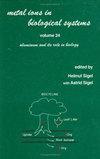Anthropogenic impacts on the biogeochemistry and cycling of antimony.
引用次数: 45
Abstract
Antimony is a potentially toxic trace element with no known biological function. Antimony is commonly enriched in coals, and fossil fuel combustion appears to be the largest single source of anthropogenic Sb to the global atmosphere. Abundant in sulfide minerals, its emission to the atmosphere from anthropogenic activities is linked to the mining and metallurgy of non-ferrous metals, especially Pb, Cu, and Zn. In particular, the geochemical and mineralogical association of Sb with Pb minerals implies that, like Pb, Sb has been emitted to the environment for thousands of years because of Pb mining, smelting, and refining. In the US alone, there are more than 400 former secondary lead smelting operations and worldwide there are 133 Pb-Zn smelters in operation today. Antimony is used in creating and improving dozens of industrial and commercial materials including various alloys, ceramics, glasses, plastics, and synthetic fabrics, making waste incineration another important source of Sb to the environment. Enrichments of Sb in atmospheric aerosols, plants, soils, sediments, as well as alpine and polar snow and ice suggest that Sb contamination is extensive, but there are very few quantitative studies of the geographic extent, intensity, and chronology of this contamination. There is an urgent need to quantify the extent of human impacts and how these have changed with time. The decreasing inventories of anthropogenic Sb with time in peat cores from Switzerland and Scotland suggest that the atmospheric Sb flux may be declining, but there have been too few studies to make any general conclusions. In fact, some studies of sediments and biomonitors in central Europe show little decline in Sb concentrations during the past decades. There is an obvious need for reliable data from well dated archives such as polar snow and ice, peat bogs, and sediments. The air concentrations, extent of enrichment, particle size distribution, and rate of deposition of Sb in urban areas is cause for concern. The natural processes which controlled the Sb flux to the atmosphere in the pre-anthropogenic past are poorly understood. The cumulative amount of anthropogenic Sb in soils has not yet been quantified. The long-term fate of Sb in soils, including weathering and mobilization, has only started to be investigated. However, the limited data available suggests that, in some locations at least, anthropogenic Sb in soils may be more mobile than anthropogenic Pb. Further study of this problem is needed, as well as the chemical speciation of Sb in soil-water-plant-sediment systems, and the implications which this has for human and ecosystem health.人类活动对锑的生物地球化学和循环的影响。
锑是一种潜在的有毒微量元素,没有已知的生物学功能。锑通常富集于煤中,化石燃料燃烧似乎是全球大气中人为锑的最大单一来源。硫化物矿物丰富,人类活动向大气中排放的硫化物与有色金属,特别是铅、铜和锌的开采和冶金有关。特别是,Sb与Pb矿物的地球化学和矿物学关联表明,Sb与Pb一样,由于Pb的开采、冶炼和精炼,已经向环境中排放了数千年。仅在美国,就有400多家以前的二次铅冶炼企业,目前全球有133家铅锌冶炼厂在运营。锑被用于制造和改进几十种工业和商业材料,包括各种合金、陶瓷、玻璃、塑料和合成织物,使垃圾焚烧成为Sb对环境的另一个重要来源。大气气溶胶、植物、土壤、沉积物以及高山和极地冰雪中Sb的富集表明Sb污染是广泛的,但对这种污染的地理范围、强度和年代的定量研究很少。迫切需要量化人类影响的程度以及这些影响如何随时间变化。瑞士和苏格兰泥炭岩心中人为锑的库存随着时间的推移而减少,这表明大气锑通量可能正在下降,但研究太少,无法得出任何一般性结论。事实上,对中欧沉积物和生物监测仪的一些研究表明,在过去的几十年里,锑的浓度几乎没有下降。显然,我们需要从年代久远的档案中获得可靠的数据,如极地冰雪、泥炭沼泽和沉积物。城市地区Sb的空气浓度、富集程度、粒度分布和沉积速度令人担忧。在过去的前人类活动时期,控制Sb向大气的通量的自然过程尚不清楚。土壤中人为锑的累积量尚未量化。Sb在土壤中的长期命运,包括风化和动员,才刚刚开始研究。然而,现有的有限数据表明,至少在某些地区,土壤中人为的Sb可能比人为的Pb更具流动性。需要进一步研究这一问题,以及Sb在土壤-水-植物-沉积物系统中的化学形态,以及这对人类和生态系统健康的影响。
本文章由计算机程序翻译,如有差异,请以英文原文为准。
求助全文
约1分钟内获得全文
求助全文

 求助内容:
求助内容: 应助结果提醒方式:
应助结果提醒方式:


